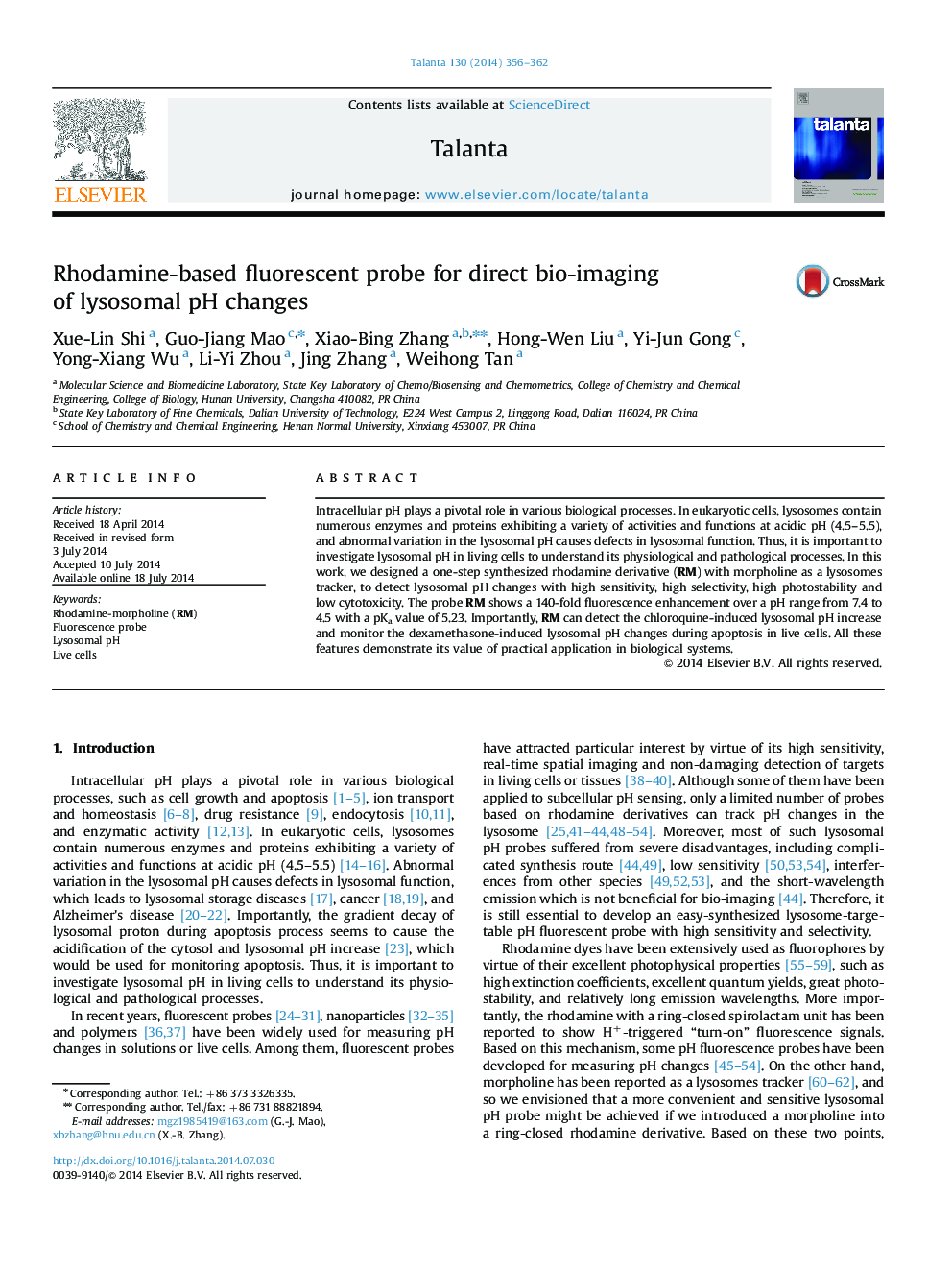| Article ID | Journal | Published Year | Pages | File Type |
|---|---|---|---|---|
| 1243602 | Talanta | 2014 | 7 Pages |
•A new fluorescent probe was developed for imaging lysosomal pH changes with excellent analytical performances.•RM can highly selectively stain lysosomes in live cells.•RM can monitor the chloroquine-induced and dexamethasone-induced lysosomal pH changes.
Intracellular pH plays a pivotal role in various biological processes. In eukaryotic cells, lysosomes contain numerous enzymes and proteins exhibiting a variety of activities and functions at acidic pH (4.5–5.5), and abnormal variation in the lysosomal pH causes defects in lysosomal function. Thus, it is important to investigate lysosomal pH in living cells to understand its physiological and pathological processes. In this work, we designed a one-step synthesized rhodamine derivative (RM) with morpholine as a lysosomes tracker, to detect lysosomal pH changes with high sensitivity, high selectivity, high photostability and low cytotoxicity. The probe RM shows a 140-fold fluorescence enhancement over a pH range from 7.4 to 4.5 with a pKa value of 5.23. Importantly, RM can detect the chloroquine-induced lysosomal pH increase and monitor the dexamethasone-induced lysosomal pH changes during apoptosis in live cells. All these features demonstrate its value of practical application in biological systems.
Graphical abstractFigure optionsDownload full-size imageDownload as PowerPoint slide
